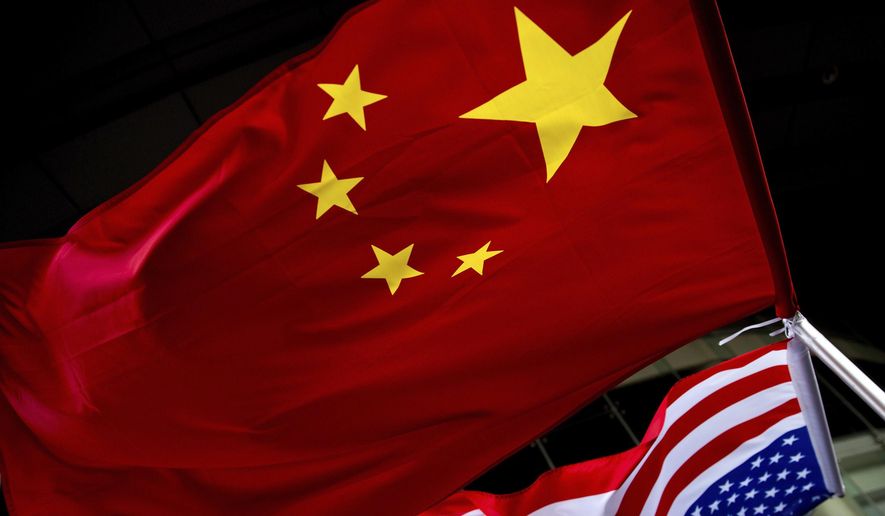A once-secret White House strategy document reveals that the U.S. has stepped up intelligence activities directed against China’s extensive spying operations in the United States and around the world.
The document, approved by President Trump in February 2018, called for maintaining an intelligence advantage over China and to “inoculate the United States, its allies and partners against Chinese intelligence activities.”
The 10-page document, titled “The U.S. Strategic Framework for the Indo-Pacific” is the first public confirmation that the CIA and other agencies have been stepping up spying activities against Beijing.
The strategic framework document said the United States also should equip allies “in operating against China and countering China’s clandestine activities in their countries.”
“Expand and prioritize U.S. intelligence and law enforcement activities that counter Chinese influence operations,” the National Security Council document states.
The document also calls on U.S. intelligence agencies to “strengthen defensive and offensive counterintelligence functions across the public and private sectors to neutralize China’s growing intelligence advantages; expand intelligence diplomacy and law enforcement cooperation with other governments to bolster understanding of Chinese intentions and capabilities.”
Instead of past policies that sought to modify China’s communist system through engagement and trade, the Trump administration’s Framework called for maintaining U.S. strategic primacy and preventing China from “establishing new, illiberal spheres of influence.”
The Framework sets out the Trump administration’s hardline approach to both China and North Korea.
The FBI and the Justice Department during the Trump administration engaged in aggressive, high-profile operations to counter Chinese spying domestically, making scores of arrests and prosecutions of Chinese agents in the United States.
Overseas, the CIA was directed by the White House to assist allies and partners in developing strong capabilities for conducting counterintelligence and counter arms-proliferation operations, along with better cybersecurity, industrial security and management of classified information.
The CIA had been stung by a major intelligence failure in China beginning in 2010.
The agency lost more than two dozen recruited agents in China as a result of CIA turncoats and communications breakdowns, according to intelligence sources familiar with the failures.
China’s Ministry of State Security and military intelligence agency have been engaged in both large-scale human spying operations and cyber- and economic espionage.
The spy services have score impressive successes in stealing and applying both U.S. military and private-sector secrets to China’s military and civilian modernization.
Militarily, the strategy report states that the United States would deter China from using military force and “develop capabilities and concepts to defeat Chinese actions across the spectrum of conflict.”
One line of effort called for the military to “enhance combat-credible U.S. military presence and posture in the Indo-Pacific region to defeat Chinese actions across the spectrum of conflict.”
The strategy called for implementing a defense strategy that would deny China air and sea dominance inside the so-called first island-chain, the string of islands stretching from Japan south through the South China Sea.
The document also called for defending first-island chain nations like Taiwan and “dominating” all domains of conflict outside the first island chain.
For Taiwan, the administration plan called for enhancing the self-governing island’s defenses through “an effective asymmetric defense strategy and capabilities” that will allow Taiwan’s military “to engage China on its own terms.”
The administration has offered to sell Taiwan more than $12 billion in U.S. arms, including missiles capable of reaching targets on the Chinese mainland from across the 100-mile-wide Taiwan Strait.
On North Korea, the White House described Pyongyang as “an acute present danger” and aimed to prevent North Korea from threatening the United States and its allies.
The framework said the U.S. objective is to convince the Kim Jong-un regime that the only path to its survival is to give up its nuclear arsenal.
In line with that goal, the administration vowed to “maximize pressure” on Pyongyang using diplomatic, military, law enforcement, intelligence and information tools “to cripple North Korea’s weapons of mass destruction programs, choke off currency flows, weaken the regime, and set the conductions for negotiations aimed at reversing its nuclear and missile programs.”
For South Korea, the strategy called for provide better-advanced weaponry and working to help Seoul and Tokyo work together better.
For India, the document called for speeding up India’s rise and capacity to provide regional security.
In line with Mr. Trump’s emphasis on trade and the economy, the NSC document called for advancing global economic leadership and promoting free and fair trade.
The 10-page, undated document was formerly labeled “secret,” and was classified by Matt Pottinger, the NSC Asia director who appears to be the author.
Mr. Pottinger later became deputy national security adviser before resigning in protest last week over pro-Trump demonstrators’ assault on the U.S. Capitol last week.
National Security Advisor Robert C. O’Brien said the document was approved by the president in 2018 and used as strategic guidance over the past three years to bolster the 2017 National Security Strategy.
“Beijing is increasingly pressuring Indo-Pacific nations to subordinate their freedom and sovereignty to a ‘common destiny’ envisioned by the Chinese Communist Party,” he said in a statement.
“The U.S. approach is different. We seek to ensure that our allies and partners – all who share the values and aspirations of a free and open Indo-Pacific – can preserve and protect their sovereignty,” he said.
• Bill Gertz can be reached at bgertz@washingtontimes.com.




Please read our comment policy before commenting.